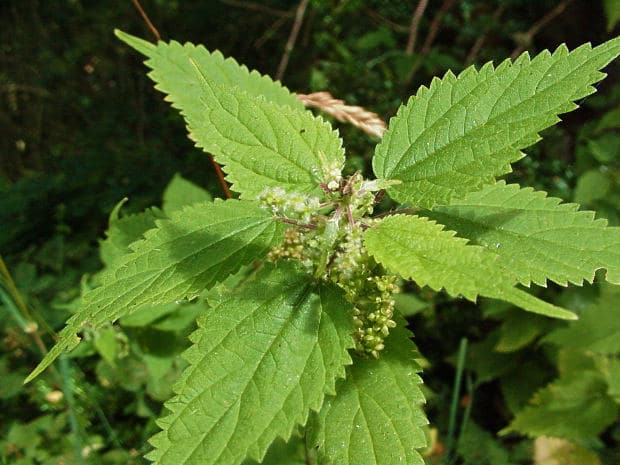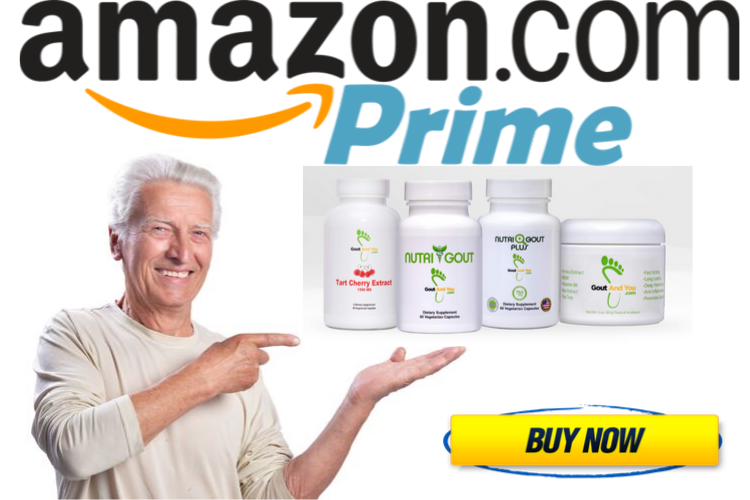
Stinging nettles and gout: Is the stinging nettle an effective herbal remedy for gout? And, if it is, how does it work and what’s the best way to take it?
Stinging Nettles and Gout
Gout refers to a medical condition characterized by repeated attacks of acute inflammatory arthritis caused by high uric acid levels in the blood. Drugs can help to ease the pain and inflammation of an attack and reduce uric acid levels to prevent further attacks.
But, as with all drugs, these have side effects that can put patients off them. Not only that, the drugs for managing uric acid levels have usually to be taken for life, which many people would prefer not to do.
Because of this, gout sufferers are increasingly looking to natural remedies to treat their gout. Many have resorted to the traditional herbal remedy; stinging nettle.
Stinging Nettle
The stinging nettle (Urtica dioica), also called the common nettle, is a herbaceous plant whose origins are in parts of Europe, Asia, and North Africa. But it grows world-wide today including in North America, South America, Australia and New Zealand.
Its leaves and stems are covered with fine hairs that, when touched, cause a painful stinging sensation and rash that can last for quite a long time if not attended to.
But, conversely, some small studies have suggested that nettles can reduce pain when applied over a sore muscle or painful arthritic joint. It’s thought that certain chemicals in the plant can reduce the body’s own inflammatory response and even inhibit the transmission of pain signals.
Nettles have a long history of use as a herbal medicine, being used to treat conditions like:
- gout
- arthritic pain
- joint pain
- muscle pain
- eczema
- nasal inflammation
- colds
- flu
- hay fever and other seasonal allergies
- high blood pressure
- liver diseases
- anemia
- kidney stones
- and more…
Listen to Dr. Paul Haider on the benefits of using nettles as a natural remedy:
Stinging Nettle for Gout Relief
Research has shown that the therapeutic benefits that come from the nettle plant derive from its natural anti-inflammatory action (it’s a very effective antihistamine) which helps to relieve inflammation, swelling and the agonizing pain brought on by gout flares.
But at least one piece of research has also associated stinging nettle with reduced uric acid levels in the blood, thereby reducing the risk of future painful gout attacks.
And it’s root is a known diuretic so can help your kidneys flush excess uric acid out of your body. But, because of its diuretic properties, you’ll need to drink lots of water in order to prevent dehydration. A dehydrated environment can actually promote uric acid crystal formation.
One of the most popular ways to take stinging nettle for gout is as a herbal tea or infusion. You can make nettle leaf tea from fresh leaves you’ve picked yourself (see video below) or, to make things easier, you can buy dried leaves in health food stores, some pharmacies, and online.
You can also get other nettle products in the form of dietary supplements, such as leaf powder, root powder, capsules, tablets, nettle extract, and tinctures. You can even get creams for topical use.
But be Careful!
Stinging nettle is generally considered safe when used as directed. But, for some, it may have some side effects, such as stomach upset, diarrhea, fluid retention, urinary problems, and even allergic reactions like hives or rashes. And it should never be used on an open wound.
Stinging nettle can also interfere with certain medications, so consult with your doctor / healthcare provider first if you’re taking:
- diuretics
- blood pressure drugs
- blood-thinning drugs
- anti-inflammatory drugs
In addition, people with the following medical conditions should avoid using nettles or, at the very least, consult with their doctor / healthcare provider beforehand:
- Pregnancy: could cause uterine contractions and possibly bring on miscarriage in pregnant women.
- Diabetes: may raise or lower blood sugar and interfere with proper diabetes management.
- Kidney/urinary tract issues: may exacerbate severe problems such as, kidney disease.
- Benign prostatic hyperplasia (BPH), i.e. enlarged prostate: see below.*
*Although some studies indicate that stinging nettle root may be helpful in treating BPH symptoms, the mechanism for it is not clear, so more research is needed to prove its efficacy. The expert advice is to NOT self-treat with nettle root but, rather, to consult with your physician / medical professional in order to rule-out prostate cancer.
Stinging Nettles: How to Pick Them and Make Them Into Tea
If you’ve got access to naturally growing nettles and you fancy having a go yourself, here’s how to do it:
Frequently Asked Questions
What causes nettle stings?
Stinging nettles are covered with tiny hollow hairs called ‘trichomes’. They’re made of silica, the tips of which break off at the slightest touch, leaving tiny silica ‘hypodermic needles’ that pierce the skin and release chemicals into it.
It used to be thought that formic acid was the cause of the horrible stinging rash on the skin. But, since the amount of formic acid in nettles is somewhat low, it’s now thought that it’s more likely that the skin irritation is caused by a combination of other chemicals found in the plant, for example, histamine, acetylcholine, and serotonin.
What’s the best way to treat nettle stings?
Firstly, don’t rub or scratch the affected area. This will only exacerbate and prolong the discomfort.
Wash the area with soap and water to remove broken nettle hairs and chemical residue. Dry gently. If you don’t have immediate access to soap and water then a clean cloth can be used to remove the hairs and residue.
Another remedy, if you don’t have soap and water, is to look for dock plants which are commonly found in the same vicinity as nettles. Gently rub crushed dock leaves on the area to help provide some relief. Although there is no evidence to prove their efficacy there’s plenty of anecdotal evidence. Dock leaves worked well enough for me when I was a boy.
A cool compress or ice pack can also help to relieve the discomfort.
Over-the-counter antihistamines and hydrocortisone creams can be effective too.
And avoid hot baths or showers. Take lukewarm or even cool baths / showers instead since heat makes things worse.



